Autistic, Lesbian, Transwoman. She/her. Monster (and monster girl) obsessed, especially kaiju, D&D, Mortasheen, and mythology.
Don't wanna be here? Send us removal request.
Text
The Cheeroonear is legitimate! Myths and Legends of the Australian Aboriginals was actually not written by W. Ramsay Smith, but sold to him by David Unaipon, a Ngarrindjeri elder, though Smith published it under his own name instead, only crediting Unaipon as his assistant on the project which is, gross. David Unaipon, though I hadn't heard of him before, is apparently a very influential Aboriginal civil rights leader, (a big enough to be on the Australian $50 note). This does mean that the Cheeroonear is definitely a real folkloric entity, and probably Ngarrindjeri in origin.
Cheeroonear
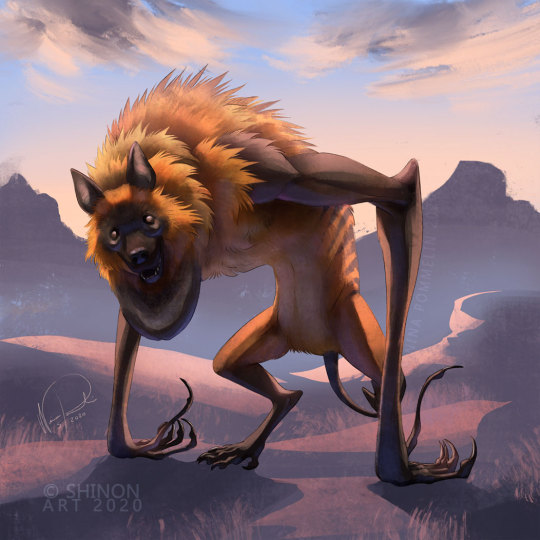
"MythicMay: Cheeroonear" © deviantArt user ShadeofShinon, accessed at her art gallery here
[I am putting a bit of faith into the cheeroonear being an authentic Australian aboriginal monster. The only primary source I can find for it is W. Ramsey Smith's Myths and Legends of the Australian Aboriginals, which does not attribute its stories to particular groups of people. So it might be a creation of the author, or it might be legit. In that book, it's said that an unprecedented peace among animals and people were interrupted by Cheeroonear's arrival, which inspired my take on them as profligate hunters.]
Cheeroonear CR 6 NE Monstrous Humanoid This giant creature is roughly humanoid, with arms so long they drag on the ground. It has a dog-like face, and a pouch like a pelican’s hangs from its throat.
Cheeroonears are large humanoids with an outsized appetite and an outsized impact on their environments. They do not hate animals, but instead see them solely as tools or resources without caring about their lives, and view smaller humanoids with a similar callousness. They do not draw distinction between animal and human meat, and will eat whichever is easier to come by. Most druids view cheeroonears as a menace, as they disrupt ecosystems by hunting vulnerable species and set fires to smoke out prey.
Most cheeroonears hunt with animals as companions—dogs are just about the only animal they have any fondness for. The dogs are used to flush out and harry prey while the cheeroonear attacks with its incredible reach. If enemies have animal companions or mounts, the cheeroonear attacks them at a higher priority. The throat pouch of a cheeroonear is big enough to allow them to swallow man-sized prey whole, but they rarely do so unless it is unarmed or already unconscious. Cheeroonears value their lives, and are more likely to flee or surrender than they are to fight to the death.
Cheeroonears typically live in mated pairs or small families. They are nomadic hunters, but do supplement their diet with roots, berries and other plant matter—usually harvested in an unsustainable way. They are happy to raid the livestock of other people if that’s more convenient than hunting wild game, but view attacks on their own dogs as a violation to be avenged. Cheeroonears are not by and large religious, but they are superstitious. Many of them hold divination in high regard, and cast lots or consult the stars before making major decisions.
A cheeroonear is about eight feet tall while hunched over in their usual posture, and ten feet when standing straight.
Cheeroonear CR 6 XP 2,400 NE Large monstrous humanoid Init +6; Senses darkvision 60 ft., low-light vision, Perception +9, scent Defense AC 19, touch 11, flat-footed 17 (-1 size, +2 Dex, +8 natural) hp 68 (8d10+24) Fort +5, Ref +8, Will +8 Offense Speed 40 ft. Melee 2 claws +11 (1d6+4), bite +11 (1d8+4 plus grab) or masterwork longspear +12/+7 (2d6+6/x3), bite +6 (1d8+2 plus grab) Ranged javelin +9 (1d6+4) Space 10 ft.; Reach 10 ft. (20 ft. with longspear) Special Attacks biocide, swallow whole (AC 14, 6 hp, 1d6+6 bludgeoning) Statistics Str 18, Dex 15, Con 17, Int 10, Wis 15, Cha 10 Base Atk +8; CMB +13 (+17 grapple); CMD 25 Feats Combat Reflexes, Improved Initiative, Lunge, Self-Sufficient Skills Climb +11, Handle Animal +8, Heal +8, Knowledge (nature) +8, Perception +9, Stealth +3, Survival +13, Swim +11; Racial Modifiers +4 Handle Animal, +4 Knowledge (nature) Languages Common, Sylvan SQ domestic empathy +12 Ecology Environment warm and temperate land Organization solitary, pair or band (3-8) Treasure standard (masterwork Large longspear, 3 Large javelins, other treasure) Special Abilities Biocide (Su) A cheeroonear’s natural weapons are treated as bane weapons against creatures with the animal type. Domestic Empathy (Ex) A cheeroonear gains the wild empathy class ability of a druid of its Hit Dice, except that the cheeroonear can only affect the attitudes of domesticated animals. A cheeroonear gains a +4 racial bonus to this check.
#cheeroonear#australian aboriginal#monstrous humanoid#folklore#david unaipon#ngarrindjeri#mythology#monster#pathfinder 1e#colonialism
107 notes
·
View notes
Text
Everyone needs to see the Florida Evangelical Conspiracy MAGA pro-skin cancer ad campaign.
youtube
Melanomas are just hickeys from angels!
In all seriousness, I've been seeing this abomination a lot in Florida. Specifically, I've been seeing it coming up as an ad before podcasts on iheartradio a lot. Which is a general audiences platform. This is not niche.
#politics#advertisement#conspiracy theories#evangelicals#florida#maga#fuck maga#tanning#apparently#the goddamn book of genesis#fascism#Youtube
86 notes
·
View notes
Text
That is a very good question, and I was kinda wondering the same thing tbh. All of your responses are excellent and plausible! I suspect they're probably all true to one degree or another, my Love.
Fleshwarping is fucking difficult, and trying to actually make that the needs of monsters are met, especially strange, artificial varieties that aren't even necessarily entirely understood by their creators, is a challenge. I might also extrapolate that this may be why so many fleshwarps fall under recognizable, defined, species. Because those are the formulas that are known to work. Experimenting is far more likely to get a mess than some kind of ultimate supermonster. And if you do make some kind of ultimate supermonster, well, you know how that often goes.
Also, I like that you brought up the much-maligned Duckbunny. I think that one, as a magical designer pet, is an excellent bit of worldbuilding, and I don't think people seem to quite get what its purpose is. It's not meant to be a combat encounter!
I might venture to think that simple hybrids between two animals are probably among the easiest fleshwarps to actually craft, and the reasons why they stay rare, though, are exactly as you described. They make terrible minions, the people who actually could direct them, like most Druids, tend to be morally opposed, and they're difficult to take care of. Some of them, like Owlbears, have gotten loose and managed to set themselves up as invasive species, but most that do escape don't last very long, even if they're formidable on paper. So, they're usually, like you said, exotic specimens in zoos.
Sabreclaw

Image © TSR Inc.
[The sabreclaw first appeared in Sabre River, a Basic D&D module, and then was reprinted in the Creature Catalogue. And then in the Mystara Monstrous Compendium for AD&D, which is where this art appears. The sabreclaw is clearly an attempt to fill the design need of making minions challenging to high level characters, which is where their cumulative defenses came in. Since AC is much more scalable in 3.x and Pathfinder than it is in earlier or later editions, I gave it cumulative offenses as well. I did tone down its nastiest ability; originally, all members of a wing fully share hit points, so none of them die unless all of them die. Combine that with an immunity to 1st-3rd level spells in the original, and every fight with these is gonna be a bit of a slog. The transfer health ability is intended to capture some of that flavor without being nearly so hostile to the players]
Sabreclaw CR 3 LE Aberration This humanoid creature has greasy black fur over its body and leathery wings growing from its back. Its face is distorted, rugose and vaguely simian. Its left hand is prehensile, but its right is taken up with a single oversized claw.
Sabreclaws are unnatural creatures, created through fleshwarping to be soldiers without goals or desires of their own. Sabreclaws are found in squads, called wings, almost exclusively; a lone sabreclaw is likely to be the survivor of a destroyed wing, and is usually desperate, insane or both. Sabreclaws do not have a functional individual identity—they think of themselves as agents of their creator, and view other members of their wing the same way typical creatures think of their arms and legs as parts of themselves.
Sabreclaw wings fight en masse, dive-bombing a target and tearing them to pieces with their namesake claws. Their tactics are usually uncreative, but effective: gang up on a single target until it stops moving, move onto the next one. The more sabrewings are clustered together, the more effective combatants they become, and a sabrewing can even relay hit points to a wounded comrade to keep them in the fight longer. Whether a sabreclaw wing retreats to choose its battles, or goes out in a blaze of glory, depends more on the desires of their master than it does any tactical sense or personal choice for the sabrewings.
Unlike many fleshwarped monster, sabreclaws are created from non-sapient creatures, namely baboons. They are always made in batches—if a single sabreclaw awakens without a wing to call its own, it lashes out violently and uncontrollably. Fledgling fleshwarpers may view using animals to create fleshwarps as a lesser evil than transforming humanoids, but few creators are resolute enough to remain at that level of mad science. Indeed, sabreclaws are often used to gather “raw materials” by their masters. Sabreclaws are carnivorous, but require much less food and water than natural creatures of their size.
Sabreclaw CR 3 XP 800 LE Medium aberration Init +5 (+9 with hive mind); Senses darkvision 60 ft., Perception +8 (+12 with hive mind), true seeing
Defense AC 15, touch 12, flat-footed 13 (+1 Dex, +1 dodge, +3 natural) hp 27 (5d8+5) Fort +2, Ref +2, Will +6 Immune poison; SR 14 Defensive Abilities cumulative defenses, evasion
Offense Speed 30 ft., fly 90 ft. (poor) Melee claw +6 (1d12+4) Special Attacks cumulative offenses, powerful charge (claw, 2d12+4)
Statistics Str 17, Dex 13, Con 13, Int 6, Wis 14, Cha 2 Base Atk +3; CMB +6; CMD 18 Feats Dodge, Improved Initiative, Mobility, Outflank (B), Precise Strike (B) Skills Fly +4, Perception +8 (+12 with hive mind), Stealth +7 Languages Common (cannot speak), telepathy 120 ft. (other sabreclaws only) SQ hive mind, transfer health
Ecology Environment any land Organization solitary, wing (2-20) or army (21-200) Treasure incidental
Special Abilities Cumulative Defenses (Su) A sabreclaw gains a +1 insight bonus to Armor Class and saving throws for every 2 sabreclaws in range of its telepathy, to a maximum of +5 for 10 sabreclaws. Cumulative Offenses (Su) A sabreclaw gains a +1 morale bonus to attack and damage rolls for every 2 sabreclaws in range of its telepathy, to a maximum of +5 for 10 sabreclaws. Hive Mind (Ex) As long as a sabreclaw is within telepathic range of one allied sabreclaw, it gains a +4 racial bonus on Initiative checks and Perception checks. If at least one sabreclaw is aware of combatants, all other allied sabrewings within the range of its telepathy are also aware of them. Transfer Health (Su) As an immediate action, a sabreclaw can lose 5 hit points in order to heal another sabreclaw within range of its telepathy 5 hit points. True Seeing (Su) A sabreclaw can see as if under the effects of a true seeing spell as a supernatural ability.
#pathfinder#dungeons and dragons#fleshwarp#mad science#worldbuilding#creature designs#animal cruelty tw
65 notes
·
View notes
Text
new tag game, because I can
no pressure tags:
@red-velvet-0w0 @nyxisagod @lynx-brynjar @encryptidarchivist @justbugsnstuff
@justanotherenbyhere +Anyone else
2K notes
·
View notes
Text
Nice job, my Love! The Seething Spirit feels like it's at least in part inspired by the Hate Plague from Transformers. It basically functions like it, but as a sapient creature, and the artwork is really reminiscent of it imo.
Seething Spirit

Image © Paizo Publishing
[Thank you, Paizo, for introducing more types of incorporeal undead in PF2e. The fact that,b y default, the seething spirit speaks Dwarven and Giant (well, Jotunn in PF2e) has some interesting world building implications.]
Seething Spirit CR 11 CE Undead (incorporeal) This reddish spectral figure is humanoid, its outline wavering as if seen through a shimmer of heat. Its eyes are furious, and its features contorted into a hateful grimace.
A seething spirit is an undead creature of pure anger. The souls that create seething spirits died in a state of extreme wrath, and the seething spirit carries that sentiment into the world. Seething spirits are particularly motivated by the specific target of anger—romantic resentment, a persecution complex, racism and straight-up spite are all common factors that might empower a seething spirit. Seething spirits remember little of their lives except their rage, and cannot be put to rest by resolving any unfulfilled business or the like. Seething spirits seek out people with similar resentments and possess them, turning them into a vessel to channel that anger into violence.
A seething spirit cannot willingly leave a possessed target, and so steers its host’s life into its campaign of hatred. They are excellent liars and capable of strategy, but often short-sighted and impatient around their focus of anger. Their ultimate goals are always violent ones, and if they can incite others into destructive mobs, all the better. A creature possessed by a seething spirit radiates rage as an almost palpable aura, and even their punches and kicks strike with the force of a greataxe. Appropriately enough for a being of extreme emotions, they are nearly powerless in the face of a calm emotions spell, which ejects them from their possessed hosts or tears away at their spiritual forms.
Seething Spirit CR 11 XP 12,800 CE Medium undead (incorporeal) Init +10; Senses darkvision 60 ft., Perception +13, taste anger Aura raging (20 ft., Will DC 23)
Defense AC 24, touch 24, flat-footed 17 (+6 Dex, +1 dodge, +7 deflection) hp 138 (12d8+84) Fort +11, Ref +10, Will +8 Immune incorporeal traits, undead traits; Weakness vulnerable to calm emotions
Offense Speed fly 40 ft. (perfect) Melee 2 incorporeal claws +16 (1d12+7) Special Attacks furious possession Spell-like Abilities CL 12th, concentration +19 (+23 casting defensively) Constant—tongues At will—detect thoughts (DC 19), invisibility (self only), ventriloquism (DC 18) 3/day—paranoia (DC 19), suggestion (DC 20) 1/day—remove fear, song of discord (DC 23)
Statistics Str -, Dex 23, Con -, Int 14, Wis6, Cha 25 Base Atk +9; CMB -; CMD 33 Feats Combat Casting,Dodge, Improved Initiative, Iron Will, Weapon Finesse, Weapon Focus (incorporeal claw) Skills Acrobatics +18, Bluff +19, Fly +29, Intimidate +22, Perception +13, Stealth +21 Languages Common, Dwarven, Giant, tongues
Ecology Environment any Organization solitary Treasure none
Special Abilities Furious Possession (Su) As a standard action, a seething spirit can attempt to possess an adjacent corporeal creature. This functions as a greater possession spell (DC 23), except that the possessed creature gains temporary hit points equal to the seething spirit’s HD, and whenever it deals damage with a melee weapon, natural weapon or unarmed strike, may choose to use the seething spirit’s incorporeal claw damage instead. A seething spirit cannot end its possession voluntarily. A creature that succeeds its saving throw cannot be possessed by that seething spirit for the next 24 hours. Temporary hit points granted by this ability refresh every 24 hours. The save DC is Charisma based. Incorporeal Claw (Ex) A seething spirit’s incorporeal touch attack deals slashing and piercing damage, and the damage is modified by the seething spirit’s Charisma bonus. Raging Aura (Su) When it is possessing a creature, the seething spirit radiates rage in a 20 foot aura. All creatures in the area must succeed a DC 23 Will save or suffer the negative effects of a barbarian rage, suffering a -2 penalty to Armor Class and being unable to use any any Charisma-, Dexterity-, or Intelligence-based skills (except Acrobatics, Fly, Intimidate, and Ride) or any ability that requires patience or concentration. A creature so affected gains a +2 morale bonus to all damage rolls against the seething spirit’s enemies. This lasts as long as the creature remains in the aura and for 1d4+1 rounds thereafter. A creature that succeeds its save is immune to the raging aura of that seething spirit for the next 24 hours. A creature that fails its save automatically fails its save against the raging aura of that seething spirit for the next 24 hours. This is a mind-influencing emotion effect, and the save DC is Charisma based. Taste Anger (Ex) A seething spirit can sense the presence of anger and hatred within 1 mile, and detect angry and hateful creatures within 30 feet as if it had blindsense. Vulnerable to Calm Emotions (Ex) A seething spirit cannot possess a creature under the effects of calm emotions, and if a creature it is possessing fails its saving throw against calm emotions, the seething spirit is ejected from its host. If a seething spirit outside of a host is targeted by calm emotions, it takes 10 points of damage per caster level (Will save for half damage).
69 notes
·
View notes
Text
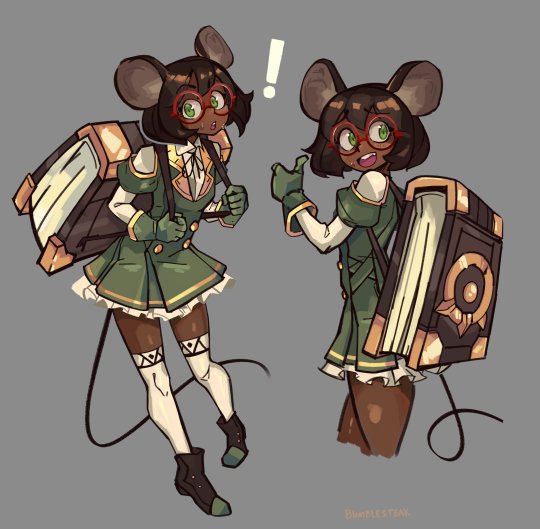
A good wizard always brings their spellbook, no matter how big it is😤📚
6K notes
·
View notes
Text

Suggested by @thecreaturecodex.
264 notes
·
View notes
Text
If I was a demon, would you summon me?? Be honest 🥺👉👈
6K notes
·
View notes
Note
Are you aware that a new Ultraman Kaiju in the form of a genetically altered, monstrous, Sea Angel just dropped? Leviera, from Ultraman Blazar! And that is what it is specifically in universe!


oh I love its non-obvious body plan! Like differing a lot from the shape of a sea angel but the sea angel is still present in the design!
197 notes
·
View notes
Text
Azata, Aeolaeka

Image © Paizo Publishing, accessed at Archives of Nethys here
[Sponsored by @razzelmire, from Pathfinder 2e. I’m glad someone at Paizo is of the same mind as me as far as “rock cycle = naturally chaotic process”. I have a protean of plate tectonics in the works. Because the original flavor text stressed how they make deals with mortals, I wanted to make sure they were at the HD cap for planar ally and planar binding spells.]
Azata, Aeolaeka CR 12 CG Outsider (extraplanar) This beautiful humanoid is seemingly carved from stone and twice the height of a typical human. They have satyr-like features, with curling horns and hoofed legs.
Aeolaekas are sometimes called stone azatas, as they embody the chaos of rock and earth. Any substance that can become dust or diamonds is seen by the azatas as embodying chaotic potential. They are, however, more patient than most other azatas, as such transformations tend to require geological timescales to occur. They are often contacted by mortal summoners for their steady heads and willingness to make lasting pacts. Some of the angelic statues found in city squares or public buildings might even by an aeolaeka waiting patiently for the time when its contract needs to be fulfilled and it must fight to protect the innocent.
An aeolaeka is an implacable foe, batting aside lesser enemies in order to concentrate on the one it considers most dangerous (often the one dealing the most collateral damage). If facing a mass of enemies, they can crush them with an avalanche of magical boulders, but wouldn’t dare use this ability if innocents might be caught in the crossfire. They might make hit and run attacks if in a cave or on solid ground, using earth glide to take enemies unaware, but only if their charges are suitably protected without their direct physical presence. All aeolaekas are willing to fight to the death against the forces of evil if they must.
When not attending to mortal affairs, aeolaekas are often found admiring geological processes. As they are immortal and patient, one might remain in a cave for millennia to watch how stalactites and stalagmites grow and crumble, whereas another might live atop a mountain to monitor its erosion versus uplift. They often take the long term view, which makes them slightly at odds with typical azatas, but they get along well with creatures of elemental earth, even lawful ones such as shaitans. They often fight against evil elemental creatures, particularly salamanders and efreets.
A typical aeolaeka is twelve feet tall.
Keep reading
59 notes
·
View notes
Text
Protean, Alengos
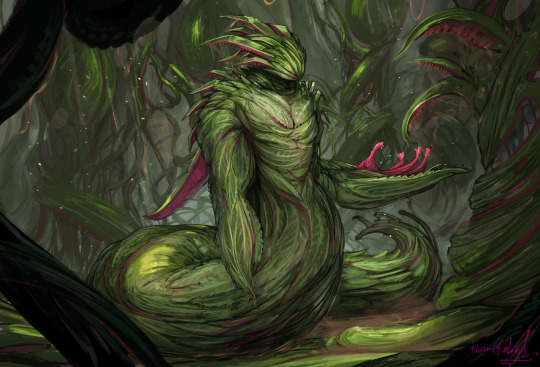
“Keeper of the corrupted coppice” © Timi Honkanen, accessed at his ArtStation here
[Our next protean is inspired by my annual teaching my students about ecological succession, and the subsequent explanation that the reality isn’t nearly as neat as the textbook version. I like to think that these guys are why there’s always potatoes in European fantasy settings hundred or even thousands of years before the Columbian Interchange (I’m looking at you, Tolkien.
As a reminder, all of these protean species have names that are anagrams of someone thematically related. Can you guess who “anelgos” is?]
Protean, Alengos CR 6 CN Outsider (extraplanar) This creature has a serpentine lower body and a humanoid torso, and appears to be composed of leaves woven together. Its head bears a crest of foliage, and its face is radially symmetrical, like a closed bud. Its hands are thick pincers, from which structures like the interior of a flower emerge.
An alengos is the protean of ecological succession. As new land is created and fields are left to go fallow, they are colonized by plants. Usually, this occurs in a somewhat predictable, stepwise fashion, but alengoses are perfectly happy to mess with the order of operations by magical and mundane means. Alengoses often seed plant species onto new islands or new continents, and they were fundamental in the creation of the Spawning Stone in the Maelstrom.
Alengoses are more likely to fight on the ground than many other species of protean, as their signature ability, the entangling aura, only functions when they touch a solid surface. Plants spring to life and grab at anyone in the area, except for other chaotic outsiders and plant creatures. An alengos will typically treat entangled enemies as lower priorities while it lobs caustic pollen at those that are not entangled, or merely crushes them to death in its coils. In the wake of a combat, an alengos will often spend some time making sure that dead bodies are broken up into suitable mulch to accelerate decomposition and increase nutrient uptake.
The influence of an alengos can be a boon or a bane to mortal farmers, loggers and other people who work regularly with plants. If properly mollified, or if the whim strikes them, an alengos can create a miraculous crop, or bring novel and useful plant species to the attention of people. On the other hand, their favorite plants are typically considered to be weeds, and their transplantations are as likely to be invasive as they are beneficial. The alengos itself rarely cares one way or the other, preferring the riot of life over any consequence their actions might cause in the long term.
Keep reading
56 notes
·
View notes
Text
every time a trans girl infodumps me abt something they're passionate about i cant help but i fall in love a little bit
23K notes
·
View notes
Text
The Pathfinder Metaplot Is a Coded Trans Narrative
Starring a goth succubus queen.
Figured that’d get your attention.
Here is the cover of Paizo’s Book of the Damned, which is the big PF1e sourcebook about demons, devils and daemons:
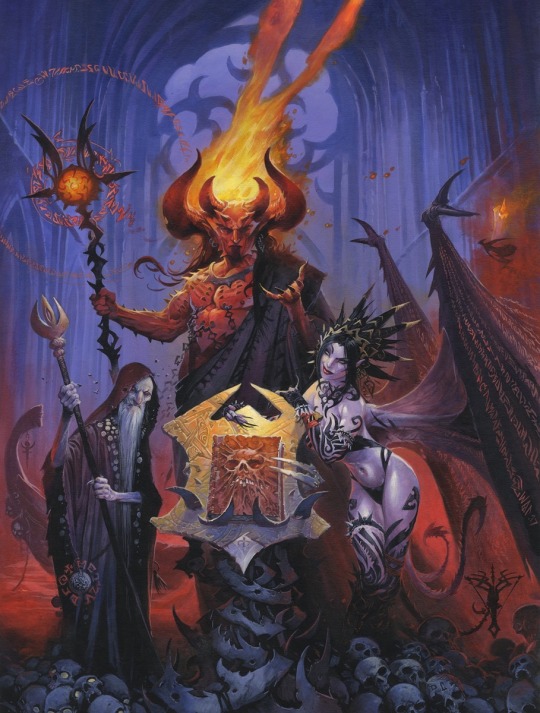
Our representative for demons, who was also the cover representative on the softcover book about demons specifically, is Nocticula. The Queen of the Succubi, and the first succubus:
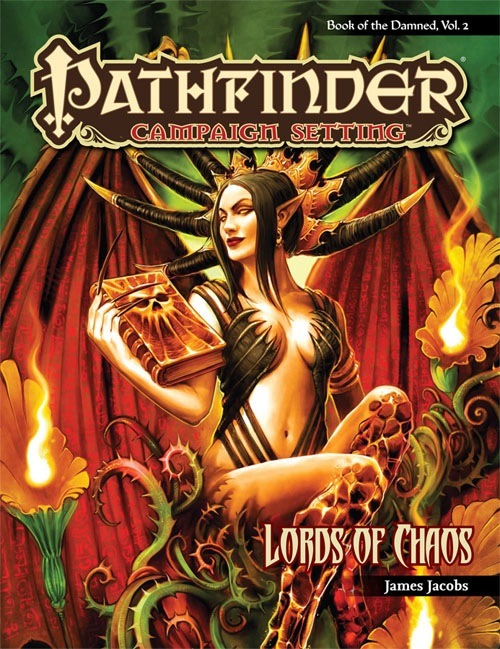
The byline is appropriate here: Nocticula is one of James Jacobs’ characters, and might honestly be his favorite. And throughout the history of Pathfinder RPG, she has been a background presence who transitioned from mysterious possible threat to ally, and eventually from demon to goddess.
Ever since the first entries in the Pathfinder setting, statuettes of two entwined succubi have been scattered in various adventures as treasure. At first, this just seemed like, “oh, we don’t have to follow Wizards of the Coasts levels of content standards, this is a darker, edgier, sexier game”. But eventually it became clear that this was an easter egg for something bigger. We eventually learned the name of the sculptor; Ayavah. Ayavah is an intersex tiefling woman with connections to the Pathfinders, whose artistic muse is erotic sculptures of succubi. She’s a member of a heretical sect called the Cult of the Redeemer Queen, which believes that Nocticula is trying to expunge herself of her demonic nature and be reborn as a goddess. This cult is correct.

Nocticula as a demon is the patron of succubi, darkness and assassination. Her domain is the Midnight Isles, each one of which is grown around the corpse of a powerful demon. There were rumors that she was Lamashtu’s assassin, but that doesn’t really hold. Nocticula and Lamashtu do not much like each other, and when Lamashtu’s ally Baphomet started mining the Midnight Isles, Nocticula killed him. He got better.
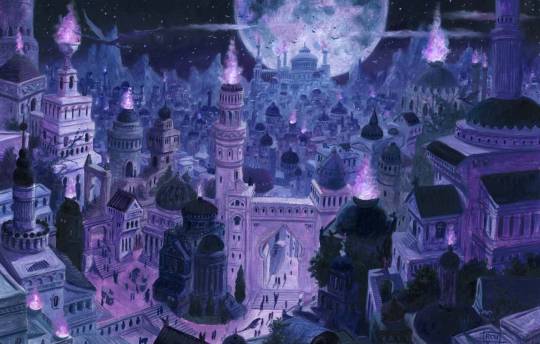
This is Alushinyrra, the Porphyry City. Formerly Nocticula’s capitol, and a manifestation of another of Jacobs’ themes, “what if Mos Eisley was horny?”. Other manifestations include Scuttlecove from the Dragon Magazine days, and Vyre from Hell’s Rebels. All three of these cities have mortally ambiguous goth women who are most likely to be allies of the PCs in the adventures that occur within them.
For Alushinyrra, that adventure is The Midnight Isles, which is part of the Wrath of the Righteous AP. That AP starts with the PCs helping Anevia Tirabade, a trans woman, get home to her wife, the paladin Irabeth Tirabade. Irabeth sold her holy sword to afford for Anevia to get magical gender affirming care.
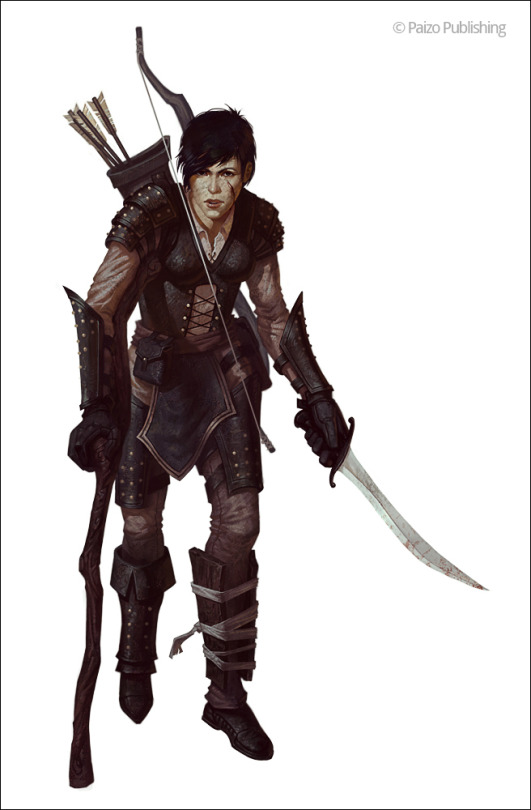
Anevia
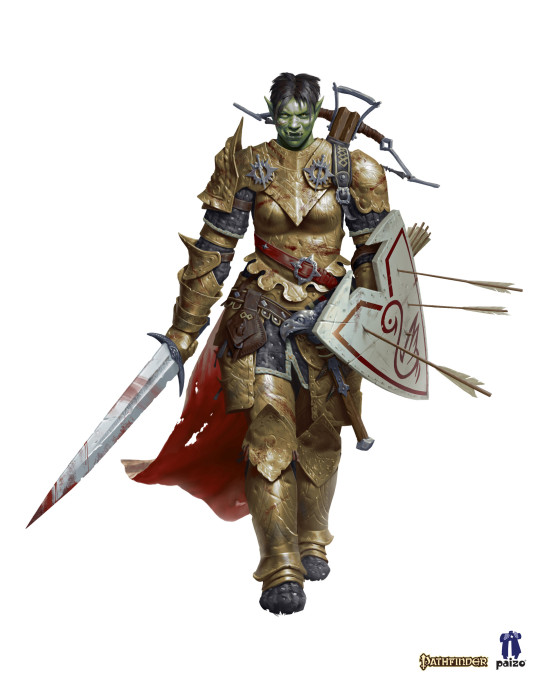
And Irabeth.
The same AP also featured a character named Arueshalae, the Heretic Demon. She was a succubus who attacked a cleric of Desna and was imprisoned in a dreamscape because of it, and when she got out realized that becoming a better person wasn’t just a dream, but something she could work towards.
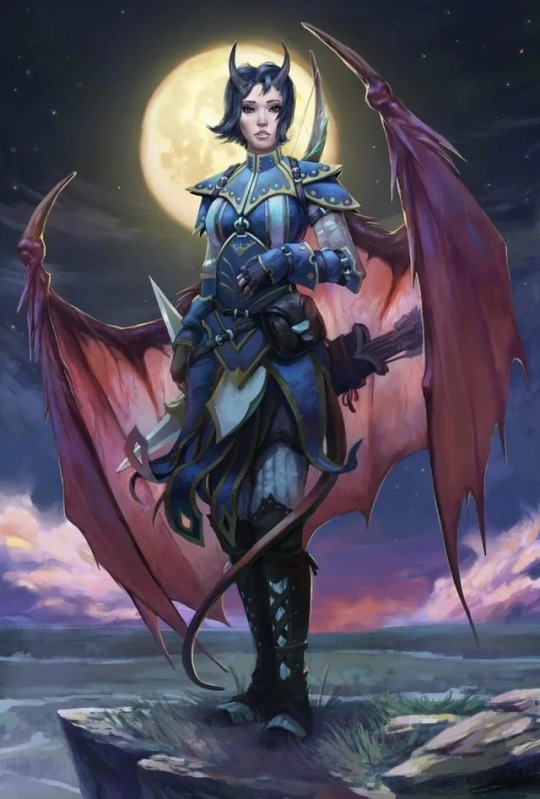
Any or all of these characters can be in your party when you go to the Midnight Isles to ally with Nocticula. And all three of them are thematically resonant with her.
Artistic, creative women are a running theme through Paizo’s APs and adventurers, and a secondary running theme is that a lot of them seem to be transformed into something one way or the other and need the PC’s help to get themselves back to the way they should be, ranging from mortals to goddesses. Both Shattered Star and Hell’s Rebels, for example, have half-elf Pathfinders who are turned to stone by the villains, and need the PCs help to rescue them and can then be recruited as allies.

Koriah Azmeren (Shattered Star)

Shensen (Hell’s Rebels)
The Reign of Winter AP is basically “Baba Yaga is Doctor Who”, and the Queen of the Witches is stuck in a set of matroyshka dolls for most of its length.
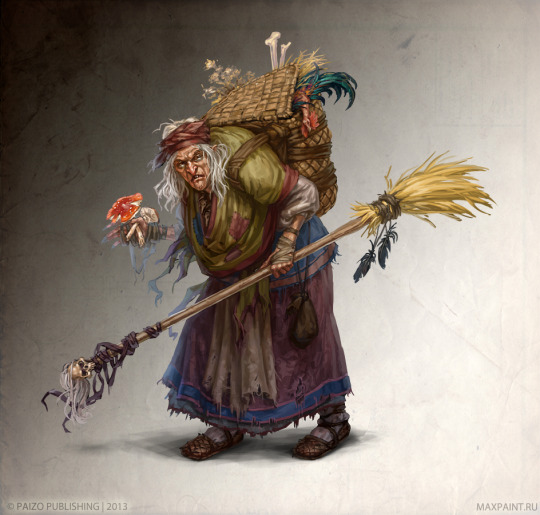
Arazni is one of the goddesses in the Pathfinder setting, who was the herald of a god but was turned into a demigoddess lich against her will. Very goth. The last 1e Adventure Path, Tyrant’s Grasp, involves her sacrificing her unlife to save the PCs. And then, in 2e, she’s back, with a new portfolio of protecting the abused, maintaining your dignity and getting revenge on those that have hurt you.

(That collar, btw, covers up an autopsy scar where her heart was ripped out. The scar was left customarily left exposed until she gained “dignity” as a portfolio item, which is a helluva piece of art direction)
And guess which of the Runelords, the wizard dictators that are how Paizo decided to introduce the Pathfinder setting way back when, which one of those is the only one to have redeemed themselves?
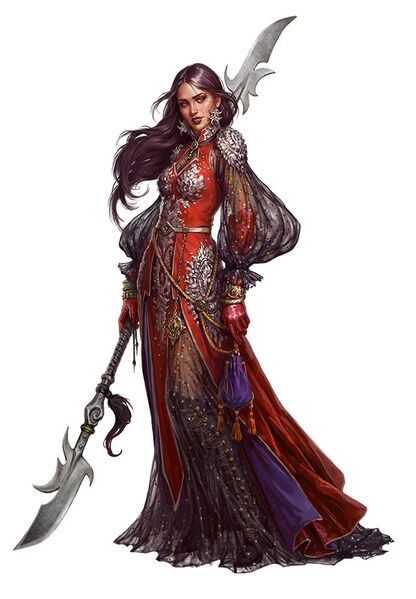
Sorshen, the Runelord of Lust, of course. Who now is one of the rulers of New Thassilon, a giant artist’s commune of a nation where Nocticula is practically a state religion.
Because Nocticula did redeem herself. Transform herself into the woman she was always supposed to be, even if she was born something different. She’s the goddess of artists, of exiles, of the soothing darkness. She’s adopted the caligni, known as dark folk to others and in D&D, who are all born the same but whose phenotypic destiny is forced on them by sinister outside forces, the owbs, to the point where they have different body plans and abilities that are forced on them by others. Caligni outside of owb influence can grow up to be whoever they want to be, and choose their own destiny. Sound familiar?
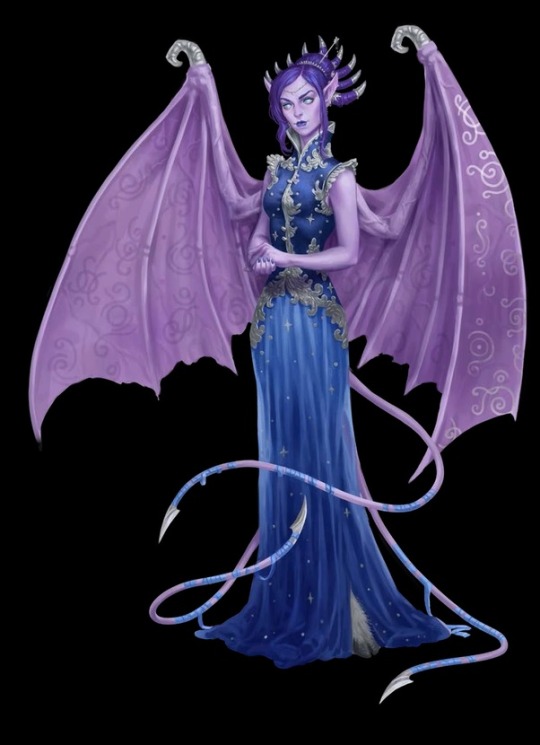
Here’s what Nocticula looks like as a goddess. Still goth AF. Still got the scary tails and the hooves. But she’s embraced her inhumanity with an unusual hair and skin color, and her feet are no longer literally blazing with suppressed rage. Nocticula looks much more whole and happy now that she’s transitioned from CE to CN, from demon lord to goddess. And if that’s not a trans narrative, I don’t know what is.
810 notes
·
View notes
Text
Protean, Temortanga
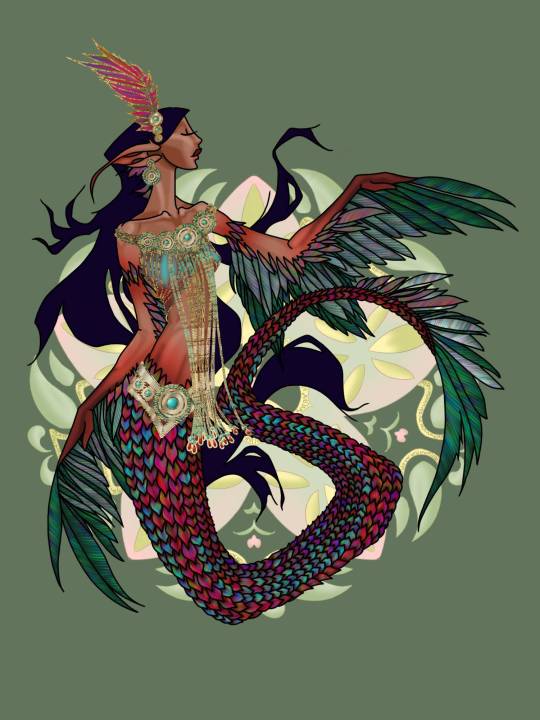
“Quetzalcoatl” © Leah Sutherland, accessed at her deviantArt gallery here
[After eight years, I’m finally doing it. I’m writing proteans. The proteans are the only one of Pathfinder’s outsider lineages I haven’t written any of before. This is because I find them too samey. They look cool, don’t get me wrong. And they pack a huge punch in combat; I have gotten really close to a TPK in a fight with three proteans versus optimized 15th level characters. But that’s all they seem to do is fight. We’re given hints about protean choirs, but all of their monster entries get very abbreviated in the Bestiaries, and all of them seem to be focused on fighting lawful creatures. There’s more to change than just destruction!
So I’m putting my own spin on it. Each of my proteans is going to focus on something else that changes, and have some sort of ability that changes themselves as well as changes others. And each of them will have some sort of goal that isn’t directly tied to “kill lawful creatures”. They’ll be designed to fit into CR gaps among existing proteans, so that way there’s a stat block for each CR 2 through 20. And I am going to cap this off with a protean lord, although in this case she’s not my character; she’s a collaboration.
So the temortanga is the one protean I’m writing who doesn’t fit into a CR gap. It’s another CR 4 protean, after the ourdivar, which is my least favorite protean, both conceptually and mechanically. Conceptually, they only exist when summoned. Mechanically, the most interesting thing they do is explode when they die.Not to toot my own horn too much, but “Cinderella’s fairy godmother as a fashionista” strikes me as a cooler concept.
Oh, and because I like to play games, each of these entries contains a riddle. The names for my proteans (minus the protean lord) will be anagrams of people’s names who are thematically related to the protean. Can you guess who “temortanga” is named after?]
Protean, Temortanga CR 4 CN Outsider (extraplanar) This creature is humanoid from the waist up, with a beautiful if noticeably inhuman face. Below the waist, she is serpentine, with scales in rainbow hues. Her arms have a set of feathers like long sleeves, and similar feathers grow from the tip of her tail.
A temortanga is a protean trendsetter; they represent changes in fashion and appearance. Their faces are more humanoid than those of most proteans, at least typically. A temortanga can change its face if it chooses to a more serpentine one, or to something wholly novel—they usually use this ability when interacting with non-humanoid races to make them feel more comfortable, or occasionally for shock value. They are not especially interested in combat, much preferring to talk, perform or play dress-up. They can create new clothing out of thin air, and their scales and feathers crumble away to form various kinds of paints, dyes and other cosmetics. Their fashion alterations are usually temporary, but a temortanga might slip a piece of its own real jewelry or fancy clothing into a costume for someone it especially likes, or incorporate previously existing materials into a new look.
If forced to fight, temortangas can scratch and lash out with their tails, but not especially well. They prefer a support role, supporting their allies with bardic performances and using spells to damage or embarrass enemies. Their passion for fashion does have a defensive purpose as well; a temortanga can imbue one of its garments with protective magic, and they change this as they need to in order to be safer in their particular fight.
Temortangas are usually obsessed with being in the spotlight; what they do, they do for the applause. Their attitudes tend towards excitable, even giddy, although they are skilled enough at social graces that they can maintain a poker face when they need to. Temortangas are cliquey, with shifting friend groups based on artistic interests and fashion choices, but moving back and forth between groups is seen as perfectly acceptable. They know that they are relatively weak compared to other proteans, and may use flattery and charm to recruit stronger proteans as allies. Unlike many other proteans, they enjoy being summoned by mortals, because it gives them a chance to share their talents with a new audience and catch up on new trends
Keep reading
58 notes
·
View notes
Text
Fun fact, but the famous Gazebo story is not the only someone’s thought that word sounded like the name of a monster. In fact, it’s been used as the name of an actual kaiju!

Meet Gazebo, from Ultraman: Towards the Future! This monstrous “tapirsaurus” (for lack of a better descriptor) is a forest-dwelling guardian beast from the Australian outback! You can read more about him here: https://ultra.fandom.com/wiki/Gazebo?so=search
Now, kaiju with names that, through linguistic coincidence, do not sound nearly as impressive to an English-speaking audience are nothing new, but, oddly enough, this kaiju hails from one of the very few pieces of Ultraman media up until very recently produced in an english-speaking country! Ultraman: Towards The Future was a fairly short-lived Australian Ultraman show (hence the beast dwelling in the outback). UTtF has amassed something of a cult following amongst the western Ultraman fandom, due to being one of the more accessible pieces of Ultraman media in the west for a long time, though as I understand it it’s not very popular in Japan. It also has an absolutely buckwild cast of kaiju, including, but not limited too: UF-O, a flying saucer-eurypterid-horseshoe crab-combination; Gerukadon, a monster notable for having the most nonsensical wing structure on a kaiju ever; Degunja, a wind spirit that it took me a stupidly long time to realize was a pastiche of the Tasmanian Devil from Looney Tunes; Plant Bios, a cyborg plant monster in the most absurd yet direct possible interpretation of that concept; and the series’s most iconic adversary, Gudis, a giant slug from Mars with a tentacled, semi-humanoid upper body and giant external brain that’s also a living virus. This is why I love Ultraman. And that’s just a few of them. I don’t even know how to succinctly describe something like Bogun.
As for Gazebo himself, and his weird name, I’ve heard it hypothesized that his name was a reference to the Gazeka, which, given the location, I find quite believable, and choosing to end it with a “bo” could very well be a joke. Bogun’s name almost certainly is. If so, it would make Gazebo not a Tapirsaurus, but a Palorchestes-saurus. Which, frankly, rules.
Dread Domicile
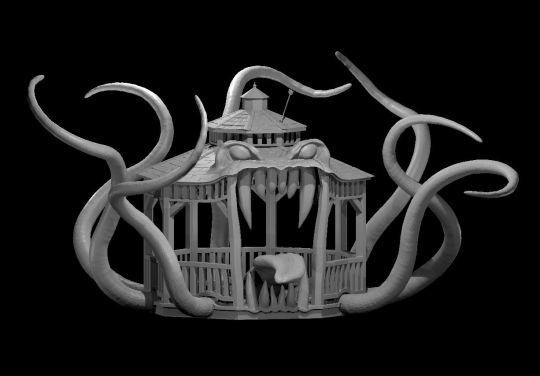
"The Dread Gazebo Updated" 3-D model by Michael Zavala under the Creative Commons license. Accessed at My Mini Factory here
[Sponsored by @balmz. "Eric and the Dread Gazebo" is a classic bit of tabletop gaming lore, which is older than I am. I haven't had this exact experience, of course, but as someone who uses a large vocabulary at the table, I have been on the receiving end of similar confusion. Rather than just make mine a gazebo, I took inspiration from the AD&D house hunter mimic.]
Dread Domicile CR 16 NE Aberration What appeared to be a gazebo reveals itself as a monster, its entrance growing a fanged maw and lashing tentacles growing around its perimeter. It has leering, dreadful eyes.
A dread domicile is a giant variant of mimic, capable of disguising itself as a whole building. Cottages, barns, sheds and gazebos are common choices for camouflage, and the dread domicile can enhance the appearance with lights, props, and even the sounds of conversation, farm animals or music. Unlike ordinary mimics, dread domiciles are typically evil—they actively hunt and eat sapient prey above all others. A number of them live in shantytowns or other rundown urban neighborhoods, where their victims won’t go missed.
Dread domiciles are slow, so they use ambush to hunt. They can feel vibrations in the ground, and so usually close their eyes until a creature has actually touched it. Their gaze causes creatures to cower in fear, so any creature that is not glued in place is usually unable to assist its allies. Glued prey is then transferred to the domicile’s mouth and swallowed whole, sequestered in a little pocket that acts as a stomach. A dread domicile will swallow multiple creatures if it can, and rapidly reshapes itself to accommodate new victims if a creature cuts its way out. Because of their low speed, a dread domicile is more likely to surrender and try to negotiate for its life than it is to flee. They collect plenty of treasure, which they use as both bait and bribes.
Variant Dread Domicile A dread vessel is an aquatic version of a dread domicile. It masquerades as a small ship, or occasionally as a raft, floating driftwood or even a whale carcass. A dread vessel is a dread domicile with the aquatic subtype, amphibious special quality, a land speed of 10 feet and a swim speed of 40 feet. A dread vessel is still a CR 16 creature.
Dread Domicile CR 16 XP 76,800 NE Gargantuan aberration Init +3; Senses darkvision 60 ft., Perception +20, tremorsense 120 ft. Defense AC 30, touch 5, flat-footed 30 (-4 size, -1 Dex, +25 natural) hp 270 (20d8+180) Fort +17, Ref +5, Will +16 DR 15/magic and slashing; Resist acid 10, cold 10, electricity 10 Offense Speed 20 ft. Melee bite +21 (2d8+10 plus grab), 6 tentacles +19 (1d8+5 plus adhesive) Space 20 ft.; Reach 20 ft. (10 ft. with bite) Special Attacks gaze, swallow whole (AC 22, 27 hp, 2d6+10 bludgeoning and 2d6 acid) Statistics Str 31, Dex 8, Con 29, Int 12, Wis15, Cha 18 Base Atk +15; CMB +29 (+33 grapple); CMD 39 (cannot be tripped) Feats Blind-fight,Critical Focus, Deceitful, Great Fortitude, Improved Critical (bite), Improved Initiative, Iron Will, Multiattack, Power Attack, Tiring Critical Skills Bluff +23, Climb +18, Disguise +26 (+46 as a building), Knowledge (dungeoneering) +16, Knowledge (engineering) +19, Perception +20, Sense Motive +17, Swim +18; Racial Modifiers +20 Disguise to appear as a building Languages Aboleth, Common SQ mimic building, sound mimicry (any) Ecology Environment any land or urban Organization solitary or development (2-6) Treasure standard Special Abilities Adhesive (Ex) A dread domicile exudes a thick slime that acts as a powerful adhesive, holding fast any creatures or items that touch it. An adhesive-covered dread domicile automatically grapples any creature it hits with its tentacle attack. Opponents so grappled cannot get free while the dreadful domicile is alive without removing the adhesive first, or if the dread domicile chooses. A weapon that strikes an adhesive-coated dreadful domicile is stuck fast unless the wielder succeeds on a DC 30 Reflex save. A successful DC 26 Strength check is needed to pry off a stuck weapon. A dread domicile can transfer a creature glued to itself in this way into its mouth with an action to maintain the grapple. Strong alcohol or universal solvent dissolves the adhesive, but the dread domicile can still grapple normally. A dreadful domicile can dissolve its adhesive at will, and the substance breaks down 5 rounds after the creature dies. The save DC is Strength-based, and the Strength check DC suffers a -4 racial penalty. Gaze (Su) Range 30 ft.; save Will DC 24; effect cower in fear 1d4 rounds. This is a fear effect, and the save DC is Charisma based. Mimic Building (Ex) A dread domicile gains a +20 racial bonus on any Disguise checks to disguise itself as a building of Gargantuan size. It can change its color and texture, and even create open spaces or lights (which radiate light up to that of a torch). Disguise is always a class skill for dread domiciles. Swallow Whole (Ex) A dread domicile reshapes itself to have a separate stomach chamber for each creature it swallows.A creature that cuts itself out of a dread domicile has a 25% chance to cut into another chamber and thus remain swallowed. A dread domicile can use its swallow whole ability even if a creature cuts its way out.
108 notes
·
View notes
Text
Priscilla

Image © @iguanodont
[A present for my girlfriend, @abominationimperatrix. As you may be able to tell from the art, this OC started life as a Houndoom in a Pokemon setting. So we talked about how to fit her into Pathfinder, particularly my take on Pathfinder, and settled on the gerulfus. There’s definitely a tradition, possibly more in line with fakelore than folklore but still, of relatively benevolent dog-headed humanoids, like the wulver or dwayyo. Plus, I’m still awfully proud of digging up “gerulfus” as a generic name for dog-headed humanoids.]
Priscilla CR 19 N Outsider (native) This humanoid appears to be an anthropomorphic hellhound, with curving horns and a spade on the end of her tail. Her fur is a dark magenta hue, and growths like an external spinal column and ribs stretch along her back and sides. She wears mismatched leather armor and a spiked collar.
Before there was Priscilla, there was a gerulfus in the Sanos Forest. Created by the fears and anxieties of the people of Sandpoint, Wartle, and other nearby communities about everything from goblins to ghouls to the Sandpoint Devil, this gerulfus was determined to make the Sanos Forest its territory. Unfortunately, there was already a powerful monster occupying the forest—a phouka witch named Gigi, who considered herself the “Scary Fairy Godmother” of Varisia. Time and again, the gerulfus threw itself at Gigi, and time and again, Gigi repelled her with tricks and spells. Eventually a combination of fatigue and curiosity got the gerulfus to ask, “Why haven’t you just killed me?”
Gigi explained that she was impressed by the gerulfus’ tenacity and zeal, and thought that those qualities could be turned to more productive use. That was enough to start a friendship, which eventually blossomed into a romance. They talked of Gigi’s patron, Mormo the Goddess of Predators, and about how Golarion in general and the Inner Sea region specifically was plagued by demons and on the verge of ecological collapse. They also talked of identity and presentation, and Gigi helped Priscilla to decide on her new appearance, gender and name. Now reborn as her better self, Priscilla is Gigi’s right hand monster, and one of Mormo’s most powerful servitors in Avistan.
Priscilla is the bogey’s bogey. She hunts monsters that cause undue suffering and ecological catastrophe. Priscilla’s favorite prey are demons, as they are tactically challenging, worthy opponents, but she has fought an entire codex of creatures and lived to tell the tale. Prisciilla might be the foremost authority on monster biology, behavior and abilities in all of Avistan: certainly in Varisia. She has sworn her service to Mormo, and combines divine spells with her natural cunning in combat to eradicate Lamashtu cults and powerful monsters. Varisia is her most frequent hunting ground, but she can and does use her gerulfus magic to open portals to travel across the globe and into the First World.
Priscilla is a tenacious combatant. She may stalk prey for hours, even days, in order to observe their strengths and weaknesses. Her spells are primarily used to enhance her tracking abilities and to bolster the strength of her and her allies. Priscilla often fights alone, but may also lead commando raids of other Mormo worshipers, or work with local monsters and people who want to fight back against greater threats. Although she carries a bow and arrow for flying enemies, Priscilla eschews the use of melee weapons—she still likes to get her teeth and claws dirty. Against weaker foes, Priscilla uses stealth to take them out with a single decisive strike, but she does enjoy a good old fashioned, knockdown brawl now and again.
Keep reading
49 notes
·
View notes
Text
Swarm, Time Flies (Monster)
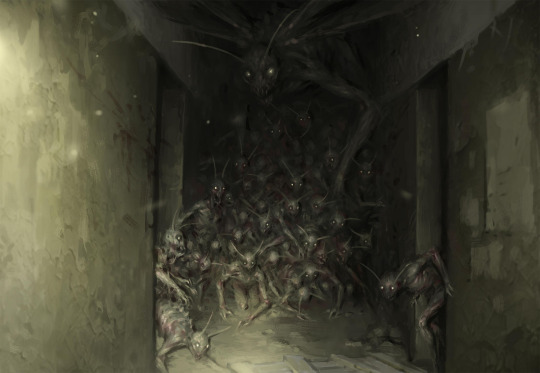
(art by DenisZhbankov on deviantart)
(This is a fun one- it started with the pun, but quickly I realized the potential for cosmic horror. Originally they were concieved as being inhumanoid, being intended as fat, spiky, botfly shaped creatures, but that was a bit hard to find art for. Feel free to use the original description if you like!)
CR17 LN Tiny Outsider Although they are called “time flies”, these creatures are far more humanoid than the small, harmless insects they’re named after. Enigmatic creatures native to the Plane of Time, they are almost always the first creatures to emerge when a rift to the plane is opened (most often through repeated uses of Time Stop). Many an unprepared wizard has been devoured by these deadly beasts after playing with forces beyond mortal ken.
Time flies' minds are completely alien, and evidently without mercy or compassion. Their primary focus is consumption of magical energy and temporal rifts, although time flies worked into a frenzy by particularly large rifts are generally a danger to any creature that draws near it.
Due to the enigmatic nature of the Plane of Time, the natural ecology of time flies (what they normally eat, how they behave in their natural habitat, and how they interact with other denizens of their plane) is a mystery. Some occultists suspect, however, that time flies are relatively weak within the Plane of Time- a terrifying prospect, as they are incredibly dangerous creatures.
Each creature that makes up this swarm is the size of a cat, with a blending of humanoid and insectile features. The beating of their wings produces a terrible thrumming noise.
Misc- CR17 LN Tiny Outsider (Lawful, Swarm) HD22 Init:+15 Senses: Perception:+10, All-Around Vision, Blindsight 60ft Stats- Str:14(+2) Dex:40(+15) Con:24(+7) Int:- Wis:31(+10) Cha:16(+3) BAB:+22/+17/+12/+7 Space:20ft Reach:0ft Defense- HP:275(22d10+154) AC:28 (+15 Dexterity, +3 Size) Fort:+16 Ref+27 Will:+22 CMD:47 Immunity: Death effects Special Defenses: Immune to Magic, Swarm Traits Offense- Swarm (22d8 plus distraction and Curse of Time) CMB+22: Speed:40ft, 60ft Fly (Good) Special Attacks: Curse of Time Spell-like Abilities- Slow (DC16), Dimensional Anchor /at-will Time Stop, Plane Shift (Self only, to Plane of Time only) 1/day Special Qualities- Outside Time, Swarm Traits, Thrumming Ecology- Environment- Extraplanar (Plane of Time) Languages- None Organization- Mistake (2-4 Swarms) Treasure- None Special Abilities- Curse of Time (Su)- A creature dealt damage by a time fly’s swarm attack must make a will save with DC25 or immediately be cursed. They are permanently staggered, and age at a rate of one age category per day. This is a curse effect that can be removed with remove curse. Immune to Magic (Su)- Time flies are immune to spells that allow spell resistance, except for the following;
Slow deals 1d8 damage per caster level (maximum 20d8), will save for half.
Chronostutter and Amalia’s Temporal Displacement heals 10d6 damage.
Spells with the electricity descriptor affect them as normal.
Outside Time (Ex)- Time flies can always act during a Time Stop or similar effects. Thrumming- (Ex) Time flies produce a horrible buzzing noise. Living creatures that can hear within 120ft of a time fly swarm are sickened. Spells with verbal components within that aura require a DC25 concentration check to be cast.
60 notes
·
View notes